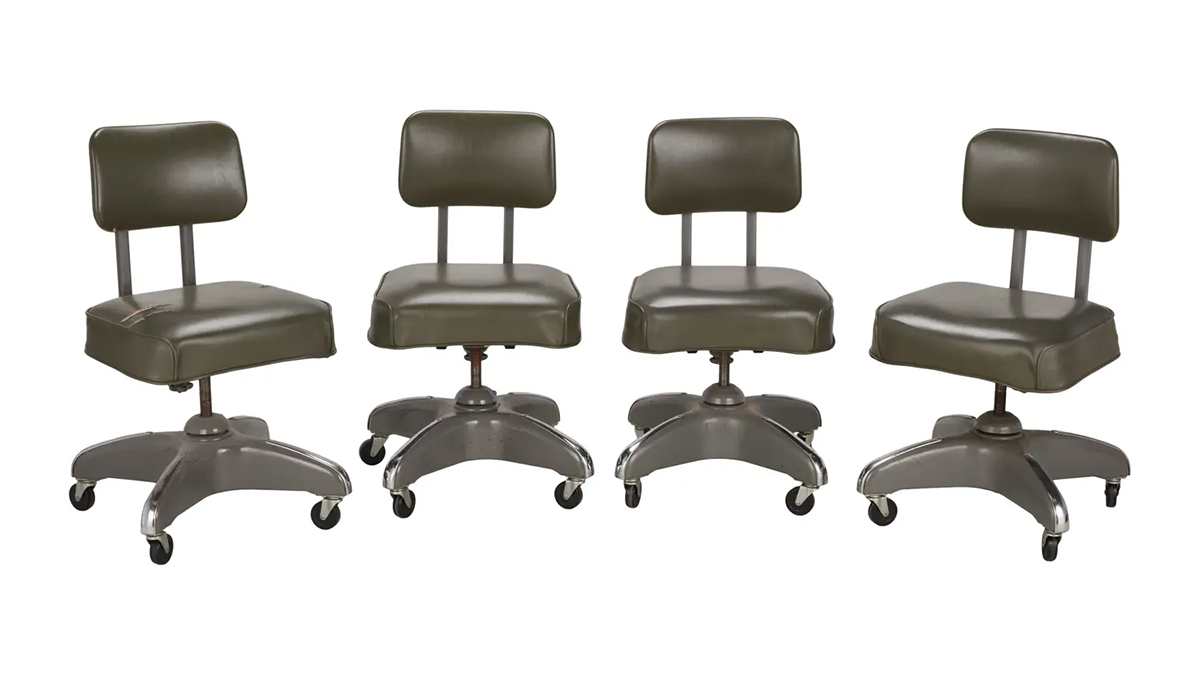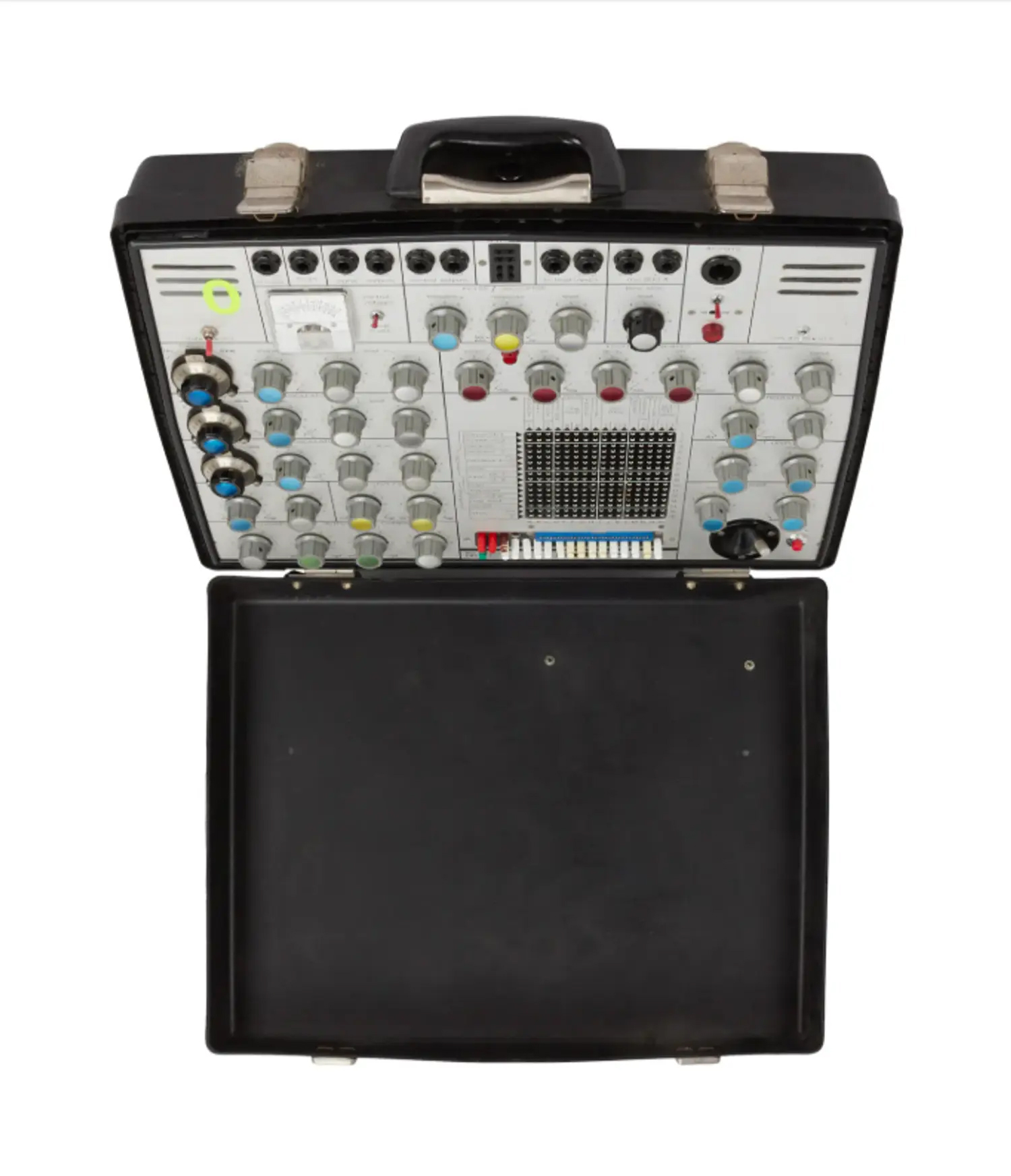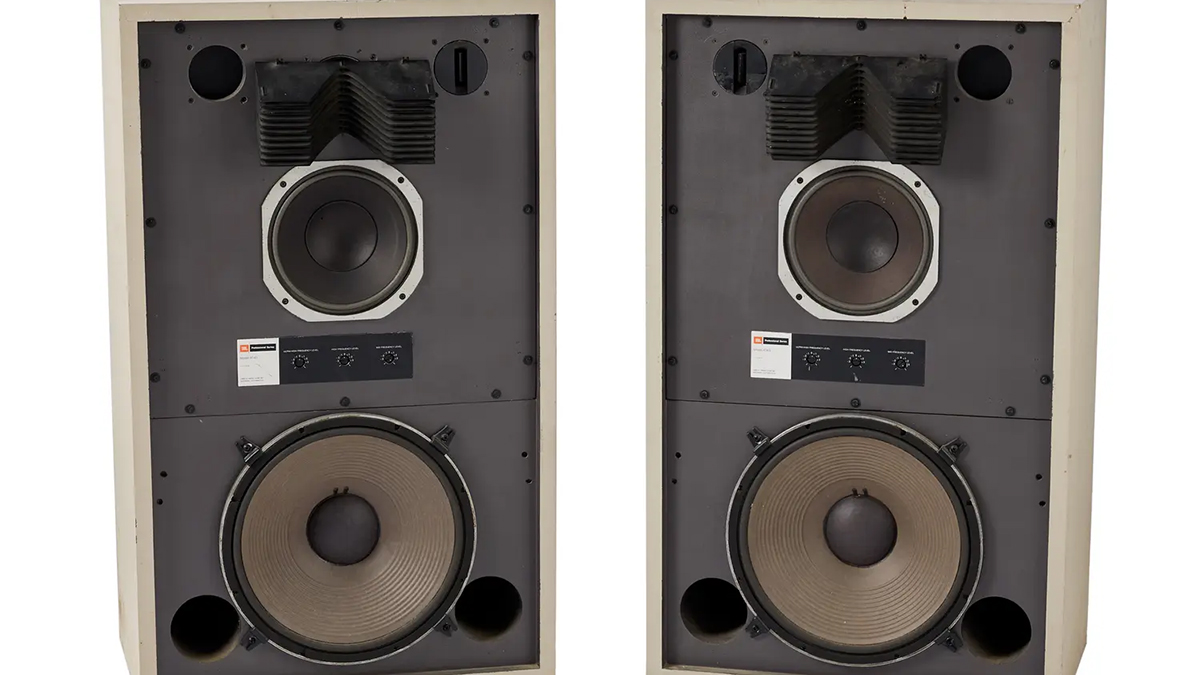
I probably lust after music gear more than most. Yes, of course I realise that it’s not just about the hardware or software you use that makes your music great, and that your creativity, imagination and musical chops are the main factors that open the doors up to successful music making. But as I lack all three of those, I more than make up for it by buying gear, and if I can get the same gear that my heroes use, then all the better.
My particular heroes started out as Kraftwerk, after seeing them at the Hammersmith Odeon in 1981, at the tender age of just 14. That gig changed my life and put me on a path to writing about synths, bands, synth bands, and more synths, which I’ve been following for the last four decades. And when I met/stalked the band’s co-founder, Florian Schneider, at Superbooth a few years ago, I told him just that, during the only conversation I have ever had with a famous musician where I would describe myself as resembling a giddy teenager. (Luckily, security was called and I was led off before I could make too much of a fool of myself.)
So when Florian died in 2022, I wrote this about him, and when an auction of many of his possessions took place this month, including a wide array of instruments and studio gear, I was the first to turn up, credit card in hand. The only problem was, it was my first ever auction, and it would end both brilliantly (gear) and terribly (bank balance).
“Never meet your heroes,” they say. That’s wrong, they’ve all been lovely. They should have said, “never buy your heroes’ gear” instead.
To say I got a little overexcited is an understatement. This article is the result, not only because I learned some hard lessons so you don’t have to, but because I’ve had to un-retire, thanks to the bill I now have to pay. So here’s the story of how I went to an auction to buy some studio chairs, but came back with most of the contents of a legend’s studio instead.
Starting sensibly
A wise auction goer – which I thought I was to start with – goes through the entire auction catalogue and decides way before what items to focus on. And with more than 450 in this case, there was a lot to get my head around.
The first ever synthesizer that Kraftwerk bought, an EMS Synthi A Suitcase, was an obvious target, but had a selling estimate of between $15 and £20k, well out of my price range.
So I set my sights on some cheaper items, in what can only be called a random scattergun approach that covered drum machines, synths, outboard gear, even mixers. I recently sold a lot of studio gear so pretty much have to start again from scratch, so why not use some of an ex-Kraftwerk member’s gear to do just that, I thought?
This meant I was looking at simple 16-channel mixers, controller keyboards, even sunglasses that lit up (yes, really). As an ex-middle-aged-man in lycra, I even considered a road bike (from the band’s Tour De France video), but not the VW Camper that ended up selling for over $40k.
The sensible point I am trying to make is that I plan to actually use the gear, something that Schneider wanted to happen to all of his equipment after he passed away.
So far so good. I made a list of some 43 items I was interested in, even putting my maximum bid next to each. I also chose a couple of items I thought only I would be interested in, including four studio chairs with a sleek, industrial design, that were used in Kraftwerk’s legendary Kling Klang Studio. How much closer to the band could you get than by having something each of them sat on while recording?

Before the auction started, then, I was armed with a budget, a list, and some maximum bids. The auction was streamed live with – thankfully – an auctioneer who didn’t talk like those ones that sell livestock. The process was clear, calm and collected. Unfortunately, I wasn’t.
One… two…
I first realised that things would go too far north price wise when a 1930s Telefunken Volks-Trautonium Pre-Synthesizer sold for $38,400, well above its top estimate of $7k. And that Synthi A? Well that went for $115,000, trouncing its maximum estimate of $20k.

By this time I was also annoyed that I hadn’t gone for Schneider’s oscilloscope, which appeared in several early pictures of him like this one on the back of the Ralf & Florian album.
That went for a shade under $4k, a price that would eventually seem reasonable in the grand scheme of this auction. Instead, I thought I would take a stab at one of the vocoders that Kraftwerk used – after all, Kraftwerk pretty much invented the robot voice, so these could be fabulous buys. That thought quickly evaporated when one went for a mere $256,000.
Now was the time not to panic so of course, I did, although thankfully the auction would end up being around six hours long and it would be some time before my next targets came up: three drum machines which I had put a £3k limit on each, not expecting them to get close.
The first, a 1979 Korg Rhythm 55, sold for $4,500, and the TR-606 for $4k. That left a Korg KPR-77, which Vintage Synth Explorer kindly describes as a ‘606 wannabe’, but I snapped it up in my first purchase for $2k. Even though they sell for a fraction of that, it is an analogue drum machine from the ’80s that Kraftwerk used, and it was half the price of the others, so I was feeling OK. Yes, I’m putting a positive spin on things.
Price wise, things were now getting even tougher. Those 16-channel mixers I mentioned sold for $900 and $1,500, way above my $600 maximum bid. Luckily, no-one seemed to notice a third one sitting in a studio rack lot that I did manage to get for around $1,700 – one of the few items to sell under its estimate – and that also included two other effects and a Yamaha FM synth.

At this point I was happy with my lots. I pretty much had what I wanted: a drum machine, synth and a mixer, albeit not quite the classic gear you’d necessarily associate with the big K. Perhaps I should have departed at this point with a relatively decent bank balance still intact.
Then it went crazy
Prices started to go sky-high after this, with a short wave radio I had my eye on selling for over $10,000, and a couple of Korg PS synths that I had fantasised about getting shifting for around $20k each. Then the ‘Ruhe’ electric Kling Klang ‘Recording’ studio sign (which I had thought would be popular) sold for nearly $20k while the studio clock – another item I thought I could snaffle up while no-one noticed – sold for $16,000.

Even a dentist’s chair, one of many odd items to feature (including a giant plastic fly) sold for $1,600, although that is about the price of a filling in the UK now, so could be considered ‘a bit of an earner’.
Then it was time for the studio chairs. I wanted them so much I even broke my own ‘maximum bid’ rule, but, alas, was unfortunately outbid by another eagle-eyed studio boffin. After a promising start, things were starting to go wrong.
The next item to catch my eye was a 1950s filter, but that went for over $5k. After way too many saxophones, we arrived at three sets of studio speakers, two of which were actually employed at Kling Klang and have appeared in a couple of rare KK photos.
The first, a set of cinema-style speakers, sold for close to $30k, so I wasn’t too confident on my target, some classic JBLs that the band used in Kling Klang from 1980 onwards. However, by this time, I was panicking that I didn’t have any actual Kling Klang gear, so when these stalled at my maximum bid, I bought them.

The lesson here is to check the size of the gear you buy… before you buy it. At 80kg a piece and a metre tall, these are not your average nearfields, and will likely cost…
